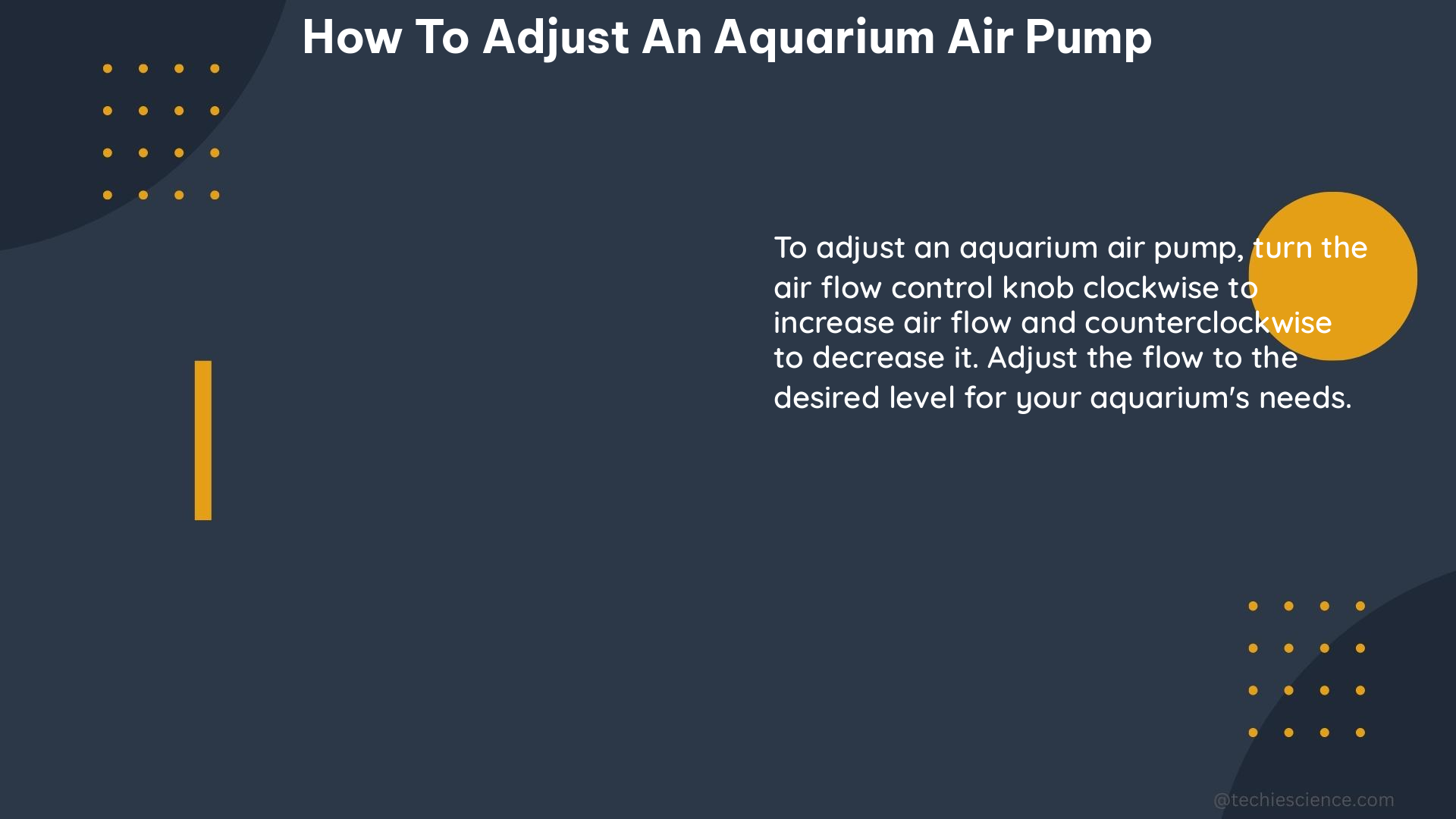Adjusting an aquarium air pump is a crucial task for maintaining the optimal oxygen levels and water circulation in your aquarium. This comprehensive guide will provide you with the technical know-how and quantifiable data to precisely control the air flow and pressure in your aquarium setup.
Understanding Air Pump Specifications
Before delving into the adjustment methods, it’s essential to familiarize yourself with the technical specifications of your air pump. These specifications will help you make informed decisions when adjusting the air flow.
Air Pump Flow Rate
The air pump flow rate is typically measured in liters per minute (LPM) or cubic centimeters per minute (CC/min). This value represents the maximum amount of air the pump can deliver. For example, a 4 LPM air pump can provide up to 4 liters of air per minute.
Air Pump Pressure
The air pump pressure is usually measured in megapascals (MPa) or pounds per square inch (PSI). This value indicates the force with which the air is being pushed through the system. A higher pressure air pump can deliver air to greater depths in the aquarium.
Air Pump Wattage
The air pump wattage is a measure of the power consumption of the device. This specification is important when considering the energy efficiency and running costs of your aquarium setup.
Adjusting Air Flow with Valves

One of the most common methods for adjusting the air flow in an aquarium is the use of valves. Valves allow you to precisely control the amount of air entering the aquarium.
Types of Valves
There are several types of valves that can be used for air flow adjustment:
- Inline Valves: These valves are installed directly in the air tubing, allowing you to adjust the air flow by opening or closing the valve.
- Needle Valves: Needle valves provide a fine degree of control over the air flow, allowing you to make precise adjustments.
- Ball Valves: Ball valves offer a simple on/off control, making them suitable for larger adjustments to the air flow.
Valve Flow Rates
When selecting a valve, consider the flow rate specifications. For example, a valve with a flow rate of 2 LPM (liters per minute) can deliver a significant amount of air to your aquarium. Choosing a valve with a flow rate that matches or exceeds your air pump’s capabilities will ensure you have sufficient control over the air flow.
Adjusting Air Flow with Air Stone Depth
The depth at which the air stone is placed in the aquarium can also affect the air flow and water circulation.
Relationship between Air Stone Depth and Air Flow
As the air stone is placed at a deeper depth, the air flow will be reduced due to the increased water pressure. Conversely, a shallower air stone placement will result in a higher air flow, but the water circulation may be less effective.
Quantifying Air Stone Depth and Air Flow
For example, an air stone placed at a depth of 12 inches (30 cm) may have an air flow of 4 LPM and a pressure of 0.016 MPa (0.232 PSI). Whereas, an air stone placed at a depth of 6 inches (15 cm) may have an air flow of 6 LPM and a pressure of 0.008 MPa (0.116 PSI).
Controlling Air Flow with Air Valves
In addition to using inline valves, you can also attach a dedicated air valve to your aquarium setup to regulate the air flow.
Air Valve Flow Rates
Air valves are typically rated with a specific flow rate, such as 2 LPM or 5 LPM. Choosing an air valve with a flow rate that matches or exceeds your air pump’s capabilities will ensure you have sufficient control over the air flow.
Air Valve Pressure Ratings
Air valves may also have pressure ratings, measured in MPa or PSI. This specification indicates the maximum pressure the valve can handle before it starts to restrict the air flow.
Monitoring and Adjusting Air Flow
To ensure your aquarium’s air flow is optimized, it’s essential to monitor and make adjustments as needed.
Measuring Air Flow
You can use a flow meter or an anemometer to measure the air flow in your aquarium setup. This will allow you to quantify the air flow and make precise adjustments.
Observing Water Circulation
In addition to measuring the air flow, observe the water circulation in your aquarium. Adequate water movement is crucial for maintaining healthy water parameters and providing oxygen to your fish.
Iterative Adjustments
Adjust the air flow gradually, making small changes and observing the results. This iterative approach will help you find the optimal air flow and water circulation for your aquarium.
By understanding the technical specifications of air pumps, valves, and air stones, and applying the adjustment methods outlined in this guide, you can precisely control the air flow in your aquarium and create a thriving environment for your aquatic inhabitants.
Reference:
– How to Turn Down an Air Pump That Can’t Be Turned Down
– Air Pump is Too Powerful
– Is There a Relatively Inexpensive Way to Measure Air Flow?
– Aquarium Air Pump: Everything You Need to Know
– How to Adjust an Aquarium Air Pump
